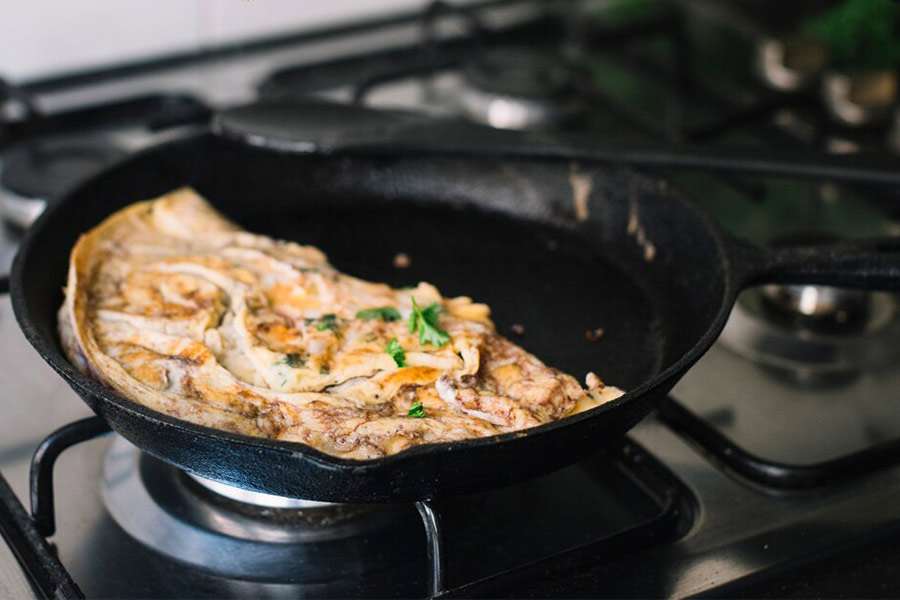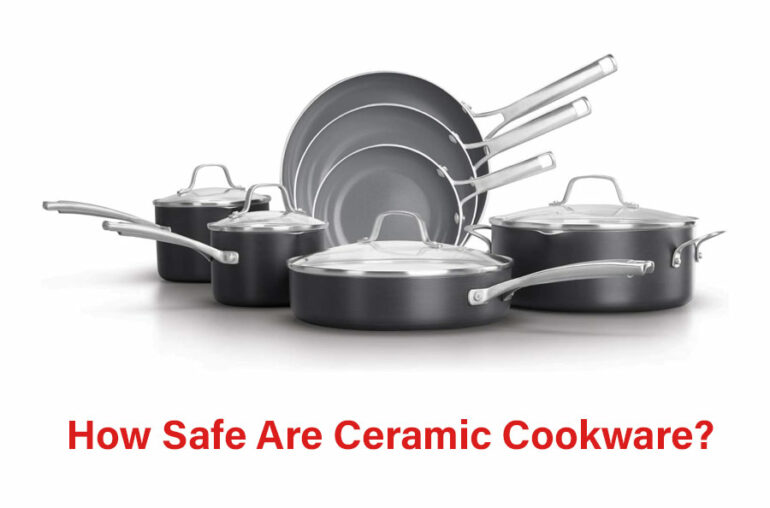Gas stove cooking is an art form, complete with the satisfying sizzle of a pan on a hot burner, the fragrance of a sauce slowly simmering in the background, and the satisfaction of serving a delicious, well-prepared meal. You can’t make a masterpiece without the proper equipment.
Cookware designed for use on a gas burner is more than just eye candy; it has the potential to elevate a meal to culinary superstardom. Let’s explore the world of cookware and learn what pans and pots work best for your gas stove.
Contents
Type of Pots and Pans That Are Healthy for Cooking
When you are looking for the best pots and pans for a gas stove and then it is important to make sure it is healthy for cooking. Let us look at some popular choices-
PFOA-free pots and pans
The best pots and pans for gas burners include a variety of options. Non-toxic and light on the environment, PFOA-free cookware is a smart choice. These pans may be used in an oven up to 350 degrees Fahrenheit and are dishwasher safe.
Cast Iron pots and pan
The use of cast-iron cookware, which is widely held in traditional cultures to be beneficial to health, is another fantastic choice. It’s a material that won’t run out anytime soon and can be used for decades at a time.
A lot of people go for it because it’s traditional cookware, which means it’s substantial and has plenty of iron, two qualities that make it quite useful. Therefore, it is a good choice for people who want to have a healthy and satisfying meal.
Silicone pots and pans
Silicone pots and pans are a great alternative if you’re trying to avoid using oil or butter. As an added bonus, it is non-toxic and simple to disinfect. It is widely used because it does not rust, lasts long, and looks great.
Stainless steel pots and pans
Many people choose stainless steel cookware because it is durable, doesn’t leach harmful chemicals into food, and can be used at high temperatures without warping.
Essential Factors to Consider When Buying Pots and Pans for Gas Stoves
It’s true that you need to be picky about the pots and pans you choose for your gas stove at home, but doing so will reward you with high-quality tools that will serve you well for many years. We will be looking into some important things that are highly essential in terms of consideration-
- The ability of heat conductivity of the metal.
- Comparison between Stainless steel and tempered glass lids.
Now let us look deep into the factors so that we can have a clear idea.
The ability of heat conductivity of the metal
One of the most crucial aspects to consider is the quality of the material used to make the pots and pans. You have to be picky since not all materials perform well with gas. The many components of gas stoves and their respective advantages and disadvantages are listed below-
Material type- Stainless Steel
If you have a gas stove, stainless steel is a fantastic material to utilize. It is long-lasting, steel won’t react with acidic food, and it is corrosion-resistant. Stainless steel’s poor thermal conductivity is a drawback. Since stainless steel is poor at transferring heat, it is usually combined with other materials to manufacture cookware.
Material type- Copper
Copper is often regarded as an excellent heat conductor due to its rapid heat conduction and distribution. However, copper is more expensive and may corrode when exposed to acids in food.
Material type- Cast Iron
Although cast iron cookware is known for its equal heat distribution and excellent conductivity, it may be time-consuming to heat up. Cast iron cookware, in general, is heavy and can be a difficult task to clean
Material type- Aluminium
Aluminum is a fantastic material for conducting and distributing heat because of its low weight and ease of usage. Aluminum cookware has two major drawbacks: it reacts badly to acidic foods and it warps easily due to its small weight. Anodizing aluminum pots and pans help with these problems, but it may be a challenge to keep them clean.
Besides these, there are other also factors to look for when buying new pots and pans which will help you to find the right fit for you.
Comparison between Stainless steel and tempered glass lids.
Be sure to inspect the pot and pan lids, as well. Assuring proper cooking requires a lid that properly fits over the pot or pan. Let us look into the differences-
Lid Type- Stainless Steel
Locking in taste and moisture with a stainless steel cover will keep your food juicy and flavorful for longer. These covers are not only long-lasting but can also withstand a great deal of heat. The issue is that there is no way to see inside while the food is cooking due to the opaque top.
Lid Type- Tempered Glass
Tempered glass lids are not only long-lasting and can endure high temperatures, but they are also excellent at preserving moisture and taste. In addition, tempered glass covers let you view what’s going on in the kitchen without lifting the lid.
Precaution: To avoid burning your hands, keep the lid handles at room temperature even while the pots within are boiling.
FAQ
Can nonstick pans be used on a gas stove?
Nonstick pans may be used on a gas stove, but only if the flames are not turned up too high and the pans are not burned. On a gas stove, you should use a pan with an aluminum or copper core.
Which material is ideal for pots and pans for gas stoves?
Stainless steel, which is resistant to both heat and scratches, is the material of choice for pots and pans. On the other hand, cast iron is also a fantastic option because of how simple it is to care for. Aluminum is your best choice for nonstick cookware.
Should I use stainless steel on the gas stove?
You may use stainless steel on a gas stovetop. However, a unique burner type may be needed for use with certain models. Inquire at your local hardware shop about the finest burner designs for use with stainless steel.
Conclusion
Ultimately, cast iron, stainless steel, and aluminum are the best pots and pans for a gas stove because of their high heat conductivity. These materials evenly disperse heat, resulting in even cooking. Heavy-bottomed pans are preferable since they don’t warp and help you cook properly.
I live in New York, United States. I did my graduation the City University of New York. Now I am a housewife. I am passionate about cooking and I also specialize in cookware and kitchen appliances. I have 6 years more of experience with cookware and kitchen appliances product review. If you have any queries about cookware and kitchen appliances you can easily contact us.





